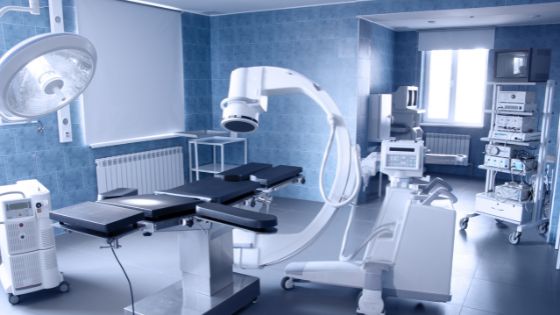Accident and emergency departments are the ‘frontlines’ – the areas in hospitals where patients present themselves or are presented by paramedical staff. Emergency rooms have to deal with an absolutely vast range of illnesses, injuries, and conditions. Befitting this variance, they usually stock a wide range of equipment. Here are some of the equipment types that are always kept in the inventory of a typical accident and emergency unit.


Privacy Equipment
Medical curtains, screens, and disposable robes are all kept in stock in accident and emergency departments in order to give patients the privacy that they deserve in what is typically a very stressful environment. Most of these privacy aids are single-use in order to prevent the spread of infectious diseases.
Sterilization Equipment
All reusable equipment in an emergency room has to be kept sterile in order to prevent the spread of infectious diseases – a very real concern in hospitals. While most surgical and suturing equipment is single-use, furniture and multi-use equipment needs to be wiped down with antiseptic spray. All staff needs to be able to access hand sanitizing spray, gloves, and masks in order to prevent the spread of disease.
Oxygen Provision Equipment
In order for the human body to function correctly, oxygen must be transported throughout all tissues in the blood. In emergencies, oxygenation can suffer and lead to complications. All accident and emergency wards contain equipment for the provision of oxygen using a mask and tank system. Using emergency oxygen without following the correct protocols can be extremely dangerous. Doctors have to sign off any use of emergency oxygen in most cases.
Cardiac Monitors
Cardiac monitors such as electrocardiogram machines or Holter monitors are extremely important in critical care wards. These monitors allow doctors and nurses to keep an eye on the cardiovascular condition of a patient. In critical care environments, cardiac monitors are usually set so that they sound an alarm when a patient’s heart rate falls below or rises above certain predetermined levels. Cardiac monitors have undoubtedly saved countless lives in accident and emergency units.
Suture Tray Equipment
Suture trays contain all of the necessary equipment for the emergency treatment of traumatic wounds using stitches. These trays usually include forceps, glue, clamps, needles, antiseptic wipes, and bandages, as well as the actual suturing materials. Emergency doctors frequently need to suture wounds as quickly as possible, so having them all in the same tray is a fine idea indeed. Most sutures used today are of the modern dissolving type.
Orthopedic Equipment
Orthopedics is a branch of medicine concerned with the musculoskeletal system. A great many patients present to the emergency room with musculoskeletal injuries. All emergency rooms have splints, cast cutters, cast-making equipment, and braces for the treatment of orthopedic injuries. Complex fractures can generally not be set in accident and emergency. Patients displaying complex fractures will be stabilized and referred to specialists. Orthopedic injuries always need to be followed up with physiotherapy consultations during the healing process.









